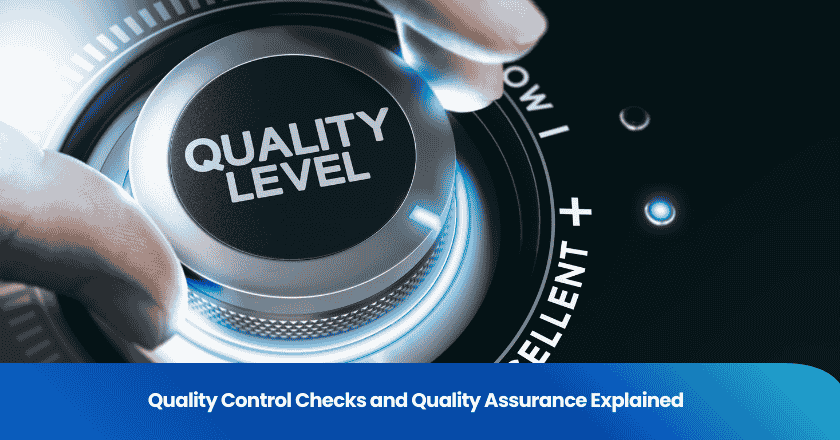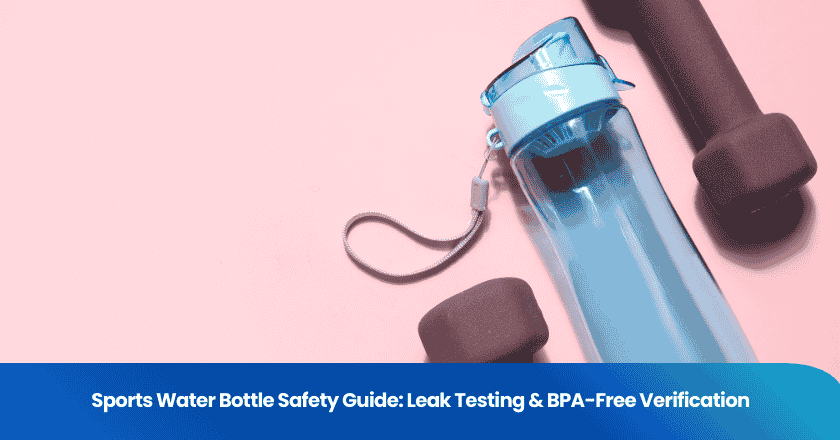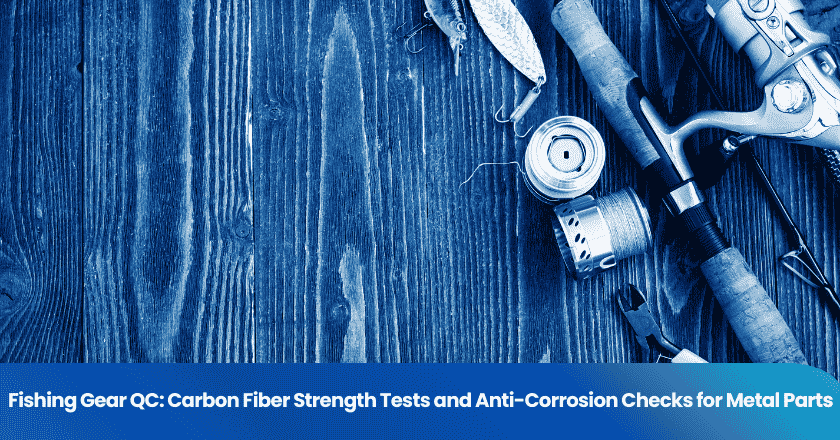
You may often hear about quality control checks and quality assurance in your work but still feel uncertain about their roles. These terms play a vital part in quality management and help you drive continuous improvement. When you understand how each fits into your workflow, you can strengthen your approach and ensure better results. Take a moment to consider where you use quality management in your daily operations.
Key Takeaways
- Quality assurance prevents defects by improving processes and training staff before production starts.
- Quality control detects defects by inspecting and testing finished products after production.
- Combining quality assurance and quality control creates a strong system that reduces errors and builds customer trust.
- Everyone in the organization shares responsibility for quality assurance, while quality control relies on dedicated inspectors.
- Regularly reviewing and updating procedures helps maintain high standards and supports continuous improvement.
Quality Control Checks vs. Quality Assurance
What Is Quality Control?
You encounter quality control every time you inspect a product or service for defects. Quality control focuses on identifying and correcting issues after production. You use quality control checks to examine finished goods, ensuring they meet established standards. These checks help you catch defects before products reach customers.
Quality control involves several activities:
- Inspecting materials and components during production
- Testing finished products for defects
- Reviewing processes to spot inconsistencies
You rely on quality control to maintain consistency and prevent defective items from leaving your facility. When you perform quality control checks, you look for problems that may have occurred during production. You take corrective action if you find defects, which helps you protect your reputation and customer satisfaction.
Tip: You can improve your quality control by training staff to recognize defects and by using standardized inspection procedures.
Quality control works best when you apply it at multiple stages of production. You might inspect raw materials, monitor assembly lines, and test final products. By doing so, you reduce the risk of defects reaching your customers.
What Is Quality Assurance?
Quality assurance takes a broader approach. You design quality assurance systems to prevent defects before they happen. Instead of focusing only on the final product, you build quality into every step of your process. You use quality assurance to create reliable procedures, train employees, and set clear standards.
Quality assurance includes:
- Developing documented procedures for production
- Training staff to follow best practices
- Auditing processes to ensure compliance
You use quality assurance to create a culture of excellence. When you implement quality assurance, you focus on improving your entire workflow. You analyze each stage of production, identify potential risks, and make changes to prevent defects. This proactive approach helps you avoid costly mistakes and ensures consistent results.
Note: Quality assurance helps you build trust with customers by showing your commitment to high standards.
You benefit from quality assurance when you want to reduce errors and improve efficiency. By setting up strong systems, you make it easier for your team to deliver quality products every time. You also use quality assurance to meet regulatory requirements and industry standards.
Core Principles
Prevention vs. Detection
You play a key role in preventing defects when you focus on quality assurance. This proactive process helps you identify risks before they become problems. You design systems that stop defects from occurring. Quality control, on the other hand, detects defects after production. You inspect products and catch issues that slipped through earlier stages. By preventing defects, you save time and resources. You also build trust with customers who expect reliable results.
Tip: Use a proactive process to reduce the chance of defects. You can review procedures regularly and update them to address new risks.
Process vs. Product Focus
Quality assurance uses a process-oriented approach. You examine every step in your workflow and look for ways to improve. You set standards and train your team to follow best practices. This method supports continuous improvement and helps you avoid defects. Quality control focuses on the product itself. You inspect finished goods and test them for defects. You rely on measurements and checks to ensure products meet requirements.
- Quality assurance: process-oriented approach, improving processes, preventing defects
- Quality control: product-focused, detecting defects, maintaining standards
Timing and Responsibility
You apply quality assurance throughout the entire production cycle. You start with planning and continue through each stage. This proactive process involves everyone in your organization. You encourage a culture of continuous improvement and shared responsibility. Quality control happens after production. You assign specific staff to inspect products and report defects. You take corrective action when you find issues.
| Principle | Quality Assurance | Quality Control |
|---|---|---|
| Focus | Process-oriented approach | Product |
| Timing | Before production | After production |
| Responsibility | All staff | Dedicated inspectors |
| Goal | Preventing defects | Detecting defects |
Key Differences
Comparison Table
You can quickly see how quality assurance and quality control differ by reviewing the table below. This comparison helps you understand which approach fits your needs at different stages of your workflow.
| Aspect | Quality Assurance | Quality Control |
|---|---|---|
| Focus | Process improvement | Product inspection |
| Timing | Before production | After production |
| Responsibility | All team members | Dedicated inspectors |
| Goal | Preventing defects | Detecting defects |
| Approach | Proactive | Reactive |
Note: You should use both quality assurance and quality control to build a strong quality management system. Each method addresses different risks and helps you deliver reliable results.
Main Distinctions
You need to recognize the main distinctions between quality assurance and quality control to make informed decisions about your processes. Here are the most important differences:
- Quality assurance helps you prevent defects by improving your procedures and training your team.
- Quality control allows you to detect defects in finished products through inspections and tests.
- You apply quality assurance throughout your workflow, while you use quality control after production.
- Quality assurance involves everyone in your organization, but quality control relies on specific staff for inspections.
- You focus on process improvement with quality assurance, and you concentrate on product quality with quality control.
You strengthen your operations when you understand these differences. You reduce the risk of defects reaching your customers and improve your reputation for reliability. You also create a culture where everyone feels responsible for quality, not just inspectors.
Industry Examples
Manufacturing
You manage quality in manufacturing by applying both quality assurance and quality control. During production, you set up procedures to prevent errors. You train your team to follow strict guidelines. You inspect raw materials before production starts. You monitor each stage of production to catch problems early. After production, you perform quality control checks on finished goods. You test products to ensure they meet customer expectations. You reject items with defects and investigate the cause. This approach helps you deliver reliable products and maintain a strong reputation.
Tip: Use regular audits and inspections to improve your production process and reduce defects.
Software Development
You use quality assurance in software development by designing workflows that prevent coding errors. You create documentation for each step of production. You train developers to follow best practices. You use software testing throughout the development cycle. You run unit tests and integration tests before releasing software. Quality control comes into play when you perform final software testing and review code for bugs. You use defect tracking tools to record and resolve issues. This process ensures your software meets customer expectations and functions as intended.
- QA: Process documentation, training, early software testing
- QC: Final software testing, defect tracking, code reviews
Healthcare
You rely on quality assurance in healthcare to set standards for patient care. You develop protocols for each stage of treatment. You train staff to follow safety procedures during production of medical devices or pharmaceuticals. You audit processes to ensure compliance with regulations. Quality control checks occur when you test medical equipment after production. You review patient records to spot errors. You analyze test results to confirm accuracy. This dual approach protects patient safety and improves outcomes.
Food Industry
You apply quality assurance in the food industry by creating safe production environments. You establish hygiene standards and train staff to follow them. You monitor each step of production to prevent contamination. Quality control checks happen when you inspect finished food products. You test samples for safety and quality. You compare results to regulatory standards and customer expectations. You remove defective products from distribution. This process helps you deliver safe food and build trust with consumers.
| Industry | QA Example | QC Example |
|---|---|---|
| Manufacturing | Procedure setup, staff training | Product inspection, defect checks |
| Software | Documentation, early testing | Final testing, defect tracking |
| Healthcare | Protocols, compliance audits | Equipment tests, record reviews |
| Food Industry | Hygiene standards, monitoring | Sample testing, product removal |
When to Use Each
Choosing Quality Assurance
You should choose quality assurance when you want to build reliability into your processes from the start. This approach works best if you need to meet strict industry standards or regulatory requirements. You use quality assurance to create a foundation for consistent results. You set up documented procedures, train your team, and monitor every step. You benefit most from quality assurance in environments where prevention matters more than detection.
Consider these situations:
- You launch a new product and want to avoid costly mistakes.
- You operate in a regulated industry that requires compliance.
- You aim to improve efficiency and reduce waste.
Tip: You can strengthen your workflow by reviewing procedures regularly and updating them as your business evolves.
Applying Quality Control Checks
You rely on quality control checks when you need to verify that finished products meet your standards. This method helps you catch defects before they reach customers. You use quality control to inspect, test, and measure outcomes. You apply quality control checks at the end of production or before delivery. You benefit from this approach when you want to maintain consistency and protect your reputation.
You should apply quality control checks in these scenarios:
- You produce items in large batches and need to ensure uniformity.
- You receive feedback about defects and want to investigate root causes.
- You want to confirm that your products meet customer expectations.
| When to Use | Quality Assurance | Quality Control Checks |
|---|---|---|
| Goal | Prevent defects | Detect defects |
| Timing | Before production | After production |
| Focus | Process | Product |
Note: You achieve the best results when you combine quality assurance with quality control checks. This integrated approach helps you prevent problems and catch any issues that remain.
Quality Management Systems
Integrating QA and QC
You strengthen your quality management system when you focus on the integration of qa and qc. You create a framework that combines prevention and detection. You design procedures that help your team avoid mistakes and catch any issues that remain. You encourage everyone to follow best practices and participate in inspections. You use the integration of qa and qc to build a culture of continuous improvement.
You can follow these steps to integrate both approaches:
- Document your processes and standards.
- Train your team to understand both quality assurance and quality control.
- Schedule regular audits and inspections.
- Review feedback and update your procedures.
Tip: You improve your quality management system when you involve all staff in both prevention and detection activities.
Benefits of Combined Approach
You gain several advantages when you combine quality assurance and quality control in your quality management systems. You reduce the risk of defects and improve customer satisfaction. You create a balanced approach that supports continuous improvement. You meet regulatory requirements and industry standards more easily.
Here are some key benefits:
1. You prevent problems before they occur and catch any that remain.
2. You increase efficiency by streamlining your workflow.
3. You build trust with customers by delivering consistent results.
4. You support a culture of accountability and learning.
| Benefit | Description |
|---|---|
| Defect Reduction | Fewer errors reach customers |
| Efficiency | Faster, more reliable production |
| Compliance | Easier to meet standards and regulations |
| Customer Satisfaction | Higher trust and repeat business |
Note: You achieve the best results when your quality management system supports both prevention and detection. You create a foundation for long-term success.
You now understand the distinct roles of quality control checks and quality assurance. Quality assurance helps you prevent defects by improving processes, while quality control checks help you detect issues in finished products. When you integrate both, you create a stronger quality management system.
Take time to review your current practices. Look for ways to enhance both prevention and detection. Commit to ongoing quality improvement for lasting success.
FAQ
What is the main difference between quality assurance and quality control checks?
You focus on preventing defects with quality assurance. You use quality control checks to detect and correct issues after production. Both approaches help you deliver reliable products and services.
How do quality audits fit into quality management?
You use quality audits to review your processes and ensure compliance with standards. These audits help you identify areas for improvement and verify that your quality management system works as intended.
Why are quality metrics and measurement systems important?
You rely on quality metrics and measurement systems to track performance and identify trends. These tools help you make informed decisions, set goals, and measure progress toward continuous improvement.
Can you use both quality assurance and quality control together?
You achieve the best results when you combine both approaches. You prevent problems with quality assurance and catch any remaining issues with quality control checks. This integrated method supports a strong quality management system.
Grow your business with TradeAider Service
Click the button below to directly enter the TradeAider Service System. The simple steps from booking and payment to receiving reports are easy to operate.



